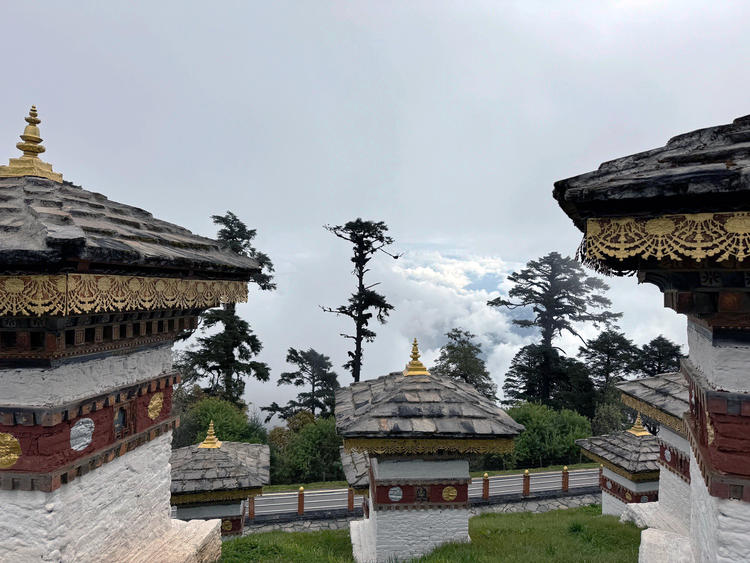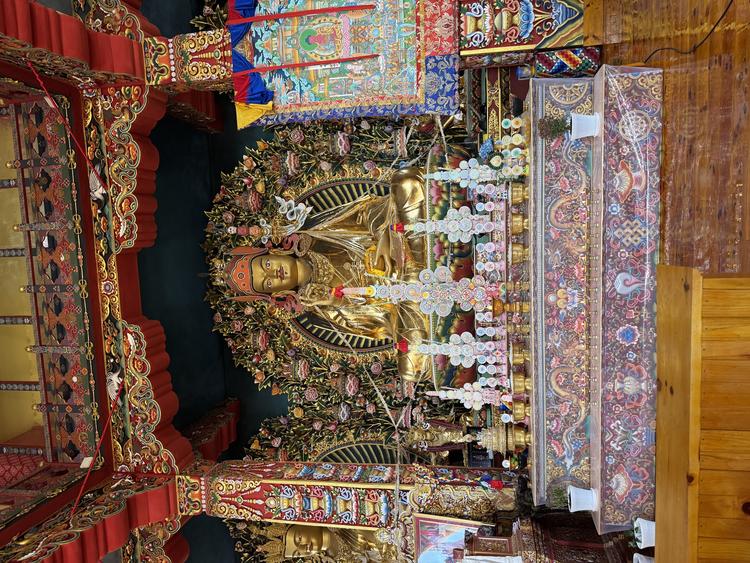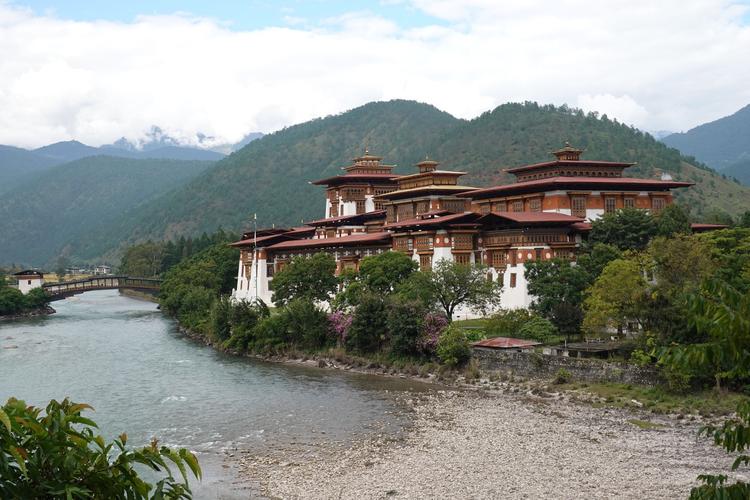Exploring the Kingdom of Bhutan
Situated on the southern slopes of the eastern Himalayas between India and the Tibet Autonomous Region of China, Bhutan, the “Land of the Thunder Dragon” as the Bhutanese call their country, is a nation blessed with breathtaking natural beauty, ecological diversity, and rich cultural heritage.
“On the high-altitude treks to temples perched on cliffs over 10,000 feet in altitude, we gained an understanding of how Buddhist laypeople may have felt during their pilgrimages after the physical exertion of climbing sometimes over 2,500 vertical feet to enter a sacred temple steeped in living history.”
 Dochula Pass (at 10,000 feet), where the Himalayas are peeking out of the clouds (Photo/Dora Ching)
Dochula Pass (at 10,000 feet), where the Himalayas are peeking out of the clouds (Photo/Dora Ching)
Bhutanese culture, deeply infused with Tibetan Buddhism for centuries, seamlessly melds religious beliefs and daily life, manifested through architecture, art, and religious practices.
The centuries-old foundation of Buddhism also gave rise to the principle of “Gross National Happiness” (GNH), a concept the fourth king of Bhutan developed in 1972 as a way to focus on the wellbeing of all its citizens by balancing traditional Buddhist values with the ever-present challenges of modernization.
In late October, I had the opportunity to travel to Bhutan as study leader for a Princeton Journeys trip.
“Our journey was like a pilgrimage, and at each stop along the way, we learned more about Bhutan, its people, and its religiosity.”
While preparing my lectures, “Tradition and Modernity,” “Spirituality and the Arts,” and “Bhutan’s Place in the Buddhist World,” I researched many aspects of Bhutan—topography, history, Buddhism, and the arts among others, but only once I traveled through the country did I truly comprehend how all aspects of life and religion are thoroughly intertwined.
Our journey was like a pilgrimage, and at each stop along the way, we learned more about Bhutan, its people, and its religiosity.
 Altar inside the Pema Chöling Nunnery, which, as a school, permits photographs (Photo/ Dora Ching)
Altar inside the Pema Chöling Nunnery, which, as a school, permits photographs (Photo/ Dora Ching)
At the visits to fortress-temples (dzongs), we stood, amazed, inside the large-scale complexes made of masonry and wood and lavishly adorned with symbolic motifs and Buddhist imagery.
We drank butter tea with toasted rice and enjoyed the national dish of chili cheese at roadside restaurants that also sold weavings, carvings, and paintings.
We visited the state-run institute for arts and crafts which not only preserves traditional arts but also promotes them.
And on the high-altitude treks to temples perched on cliffs over 10,000 feet in altitude, we gained an understanding of how Buddhist laypeople may have felt during their pilgrimages after the physical exertion of climbing sometimes over 2,500 vertical feet to enter a sacred temple steeped in living history. In the rarefied air of the temples, we witnessed locals pray and deepened our knowledge of the deities and their artistic forms.
 Punakha dzong, or temple fortress. (Photo/ Dora Ching)
Punakha dzong, or temple fortress. (Photo/ Dora Ching)
